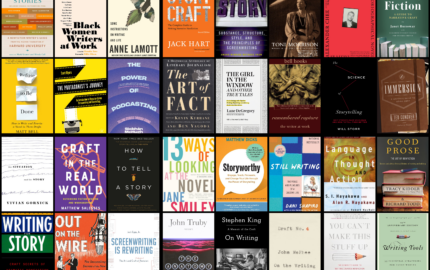Oh, the nut graf. I had to mentally brace myself to write about it. After all these years, it’s still the hardest thing I write. I tell students that all the time. I want them to know it’s not just them.
Here’s an outline of how I teach it in Reporting 1 at the University of Oregon. It requires me to go back a bit because I start setting this up early in the term, and it goes in pieces:
First, I use seven questions, not five Ws, for news story writing, and I divide them into two columns:
- Basic questions: Who? What? Where? When?
- Big-picture questions: Why? How? SO WHAT? (Yes, it’s in all caps. Often in a different color dry-erase marker, too.)
Second, we do summary (AP) ledes, and my definition of a good one is this: The one-sentence summary lede provides the answer to one big-picture question. In sports, this means that you don’t just give the score and who won, but HOW they won or WHY it matters.
Other posts on teaching the summary nut
I use sports as an entry, even with non-sportsy students, because I have examples that are really easy to see. That’s because sports writers frequently write through, updating a game story, so you get two versions of the same story with different ledes. Then we transition to non-sports stories, both newspaper and magazine. Calvin Trillin’s profile of Edna Buchanan works super well; it’s literally a lede about a lede, and there’s a very clear establishing section. Also, this moves into ethics of police reporting. But I digress.
Third, feature ledes. An excellent feature lede, I teach, explains, illuminates or helps the reader picture the answer to a big-picture question. That might be an overstatement, but it’s an excellent tool for Reporting 1, and you can see how strong feature ledes set up the themes of the story.

Fourth, nut graf. I use my friend and colleague Lisa Heyamoto’s formula: nut graf = transition + summary lede. Again, that’s not 100 percent perfect, but it gives beginning students a sense of structure. You need to get from your lede to your nut graf, and that’s a transition. So be mindful about what that looks like. And again, that summary lede part of the nut graf answers a big-picture question. So here you’re giving readers why the story matters. I actually use a phrase I heard in a workshop: Why I invited you to this party…
Complete the sentence, again and again
That’s the hard-core structural part, and we break down writing in class to see it in action. I just love doing that. I’ve also taken my own byline off a profile I did that is really well reported and quite well written, but doesn’t really have a strong nut graf, and it hurts the piece. I have students look for it, and they have to guess, and then I tell them it’s mine 🙂 We edit together. Oh, if only I had that one back. Again, I digress …
We also talk more big-picture, and I give them the technique I use. I open a file, put my byline on it so I feel like I’ve accomplished something, and then I type: “This is a story about ….” And I type and finish the sentence over and over, with a return and a space after each, until I get specific enough that I’ve got it. This helps me get from topic to story, to find the action and the movement.
That is probably way more than needed, but I love thinking about this and am always trying to improve. Teaching has made me so much better at structure, I swear.
***
Lori Shontz spent 25 years covering sports, women’s issues and higher education. She now teaches journalism at the University of Oregon School of Journalism and Communications.



